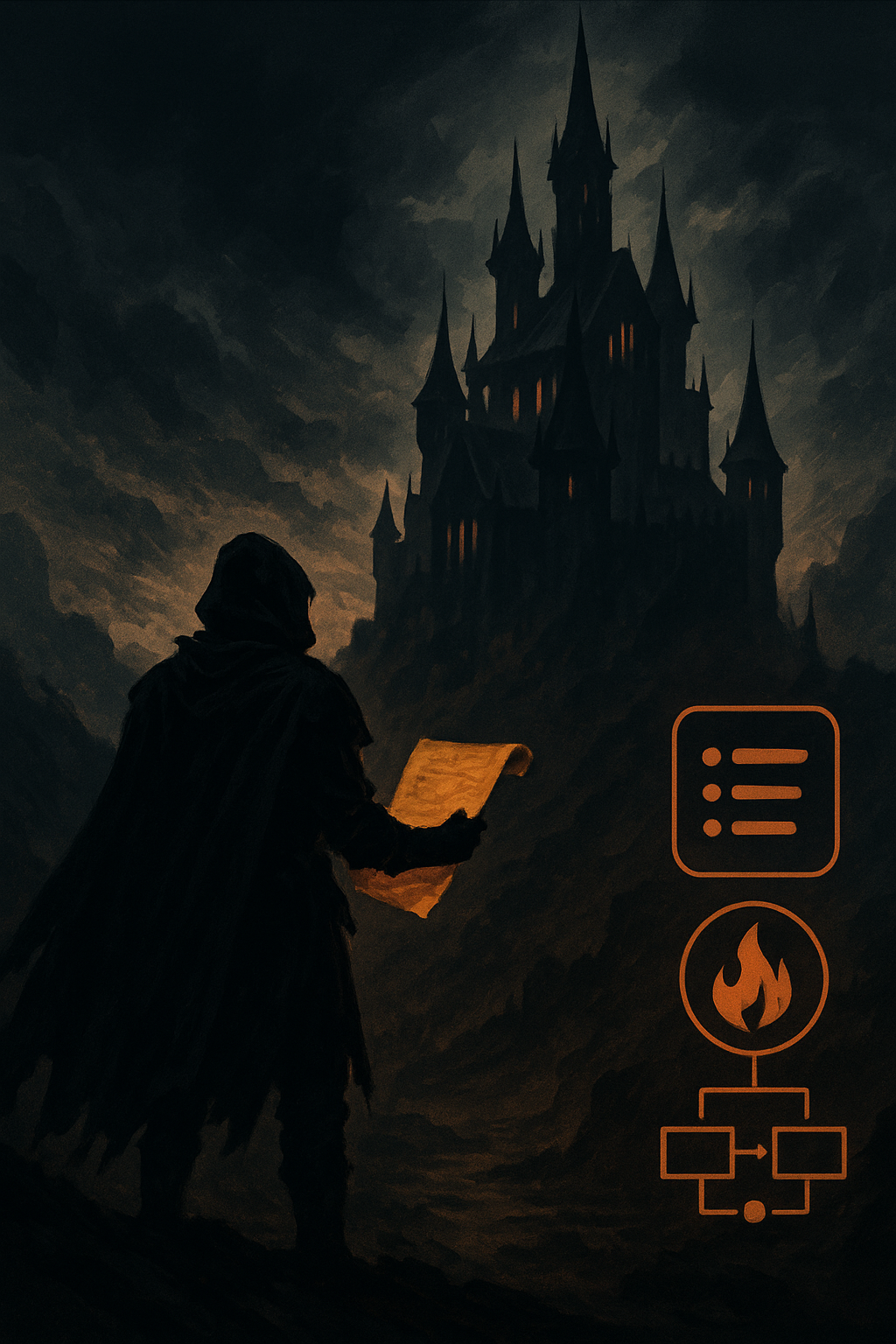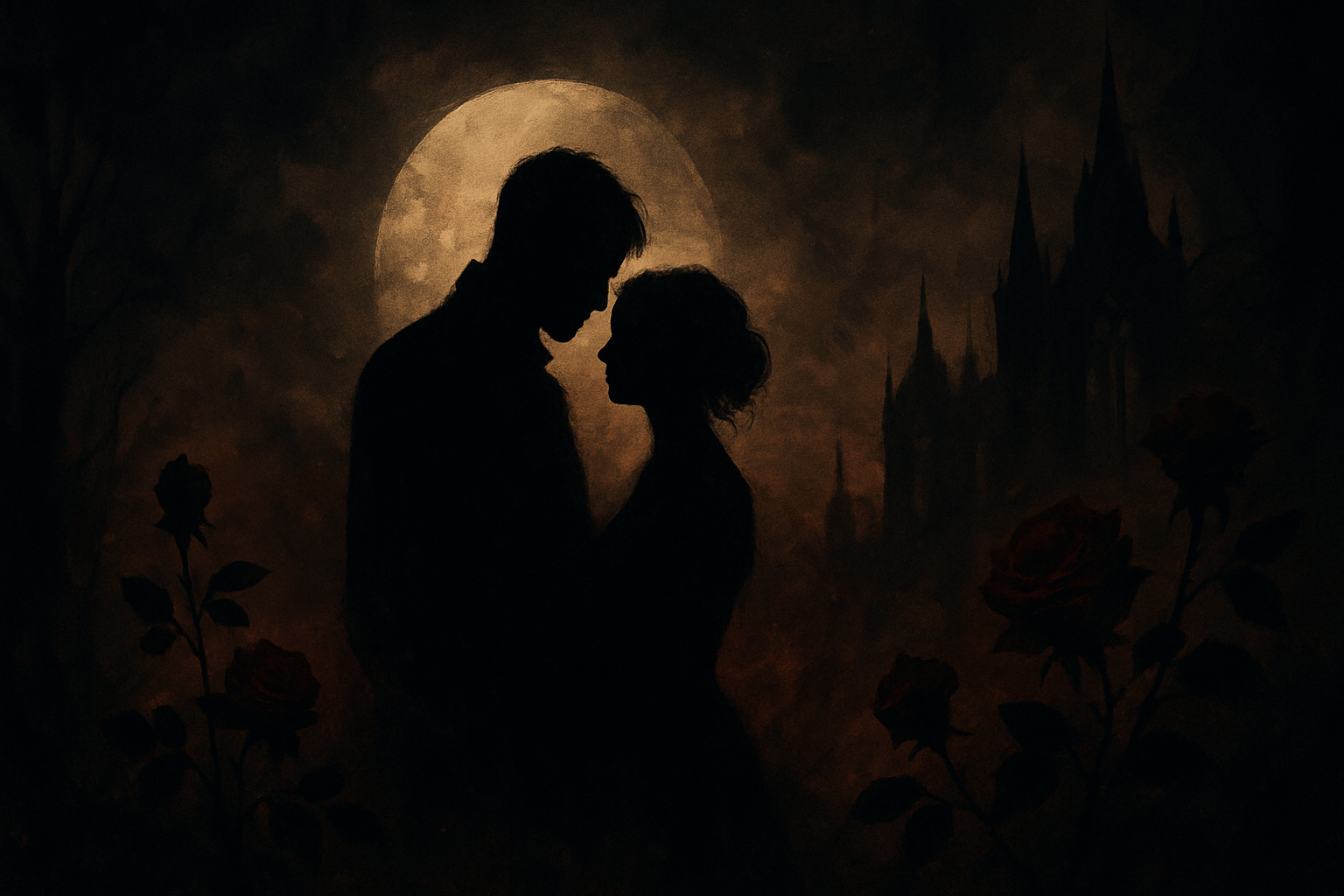Dark fantasy is enjoying a resurgence as book sales surge and readers seek escapism; in 2024, fantasy and dark fantasy print sales in Canada rose 82% over the previous year and the global value of science fiction and fantasy leapt 41.3% between 2023 and 2024. This appetite comes at a time when many adults want stories that explore moral ambiguity, oppressive worlds and the shadows within. Learning to craft such novels requires more than world‑building; it demands a plan to blend horror, realism and magic without sacrificing empathy. This guide provides you with a step‑by‑step framework, pitfalls to watch out for and a mini‑outline you can adapt to your own dark tale.
To learn how to write a dark fantasy novel, begin by immersing yourself in the genre, mapping a grim world with clear rules, crafting morally ambiguous anti‑heroes and ruthless antagonists, plotting high stakes conflicts and bleak resolutions, and balancing horror, magic and realism with restraint.
- Print sales for dark fantasy grew by 82% in 2024, and science fiction and fantasy revenue climbed 41.3% year over year, signalling strong demand.
- Fantasy sales climbed 45% in 2021 amid increased anxiety; reading speculative fiction has been linked to improved empathy and reduced stress.
- Dark fantasy blends oppressive settings, dystopian societies, morally ambiguous anti‑heroes and bleak magic; subgenres include grimdark (hopeless) and nobledark (fleeting hope).
- Horror aims to frighten, whereas dark fantasy emphasises world‑building and moral questions. Characters in dark fantasy often survive, unlike those in horror.
- Successful dark fantasy relies on clear world rules, complex characters, consequences for magic, strategic use of violence and avoiding info dumps or miracle resolutions.
What is dark fantasy novel writing?
Dark fantasy writing sits at the intersection of supernatural horror and traditional fantasy. It is defined by bleak worlds ravaged by war, plague or tyranny; magic that corrupts as much as it empowers; and protagonists who are neither heroes nor villains but complex survivors. Unlike pure horror, which exists to induce fear in the reader, dark fantasy uses fearful elements to explore themes such as power, corruption and the fragility of hope. Whereas high fantasy often champions noble quests and clear moral lines, dark fantasy deconstructs those conventions. These stories might feature cruel gods, dystopian cities and monsters who are indistinguishable from humans. Subgenres include grimdark, where hope is virtually absent and endings are bleak, and nobledark, where tiny acts of courage offer glimmers of light in an otherwise harsh landscape.
How do you start dark fantasy novel writing?
Start by consuming the genre deeply. Read widely across dark fantasy, grimdark, nobledark and adjacent subgenres such as horror and romantasy to understand current tropes, market expectations and reader preferences. Analyse what resonates with you: is it the oppressive atmosphere, moral ambiguity, the blend of magic and gore, or the exploration of power dynamics? Next, choose your thematic focus—revenge, survival, corruption, redemption—and pick a setting that intensifies it. Build a world bible outlining geography, societies, magic systems and cultural influences. Decide whether you will lean toward pure fantasy worlds or blend in modern or historical elements. Finally, draft a synopsis that captures the tone and stakes. A strong start often involves a gripping scene that introduces the protagonist’s moral dilemma and hints at the darkness to come.
Step‑by‑step framework to plan a dark fantasy novel
- Research and choose your subgenre: Explore dark fantasy classics and recent successes. Determine whether you’re writing grimdark (no hope) or nobledark (traces of hope) and consider blending with adjacent subgenres such as romance or urban fantasy. Watch‑out: jumping in without understanding subgenre conventions can lead to mismatched tone or marketing; fix by reading widely and noting patterns in character arcs, stakes and endings.
- Establish your world and its rules: Sketch a dystopian landscape with history, politics, economies and cultures. Design a magic system that carries a cost—using magic should inflict physical or moral consequences. Plan the atmosphere with gothic or eerie settings, cursed landscapes, diseased forests, decaying cities or oppressive castles. Watch‑out: infodumps and slow openings; fix by revealing the world gradually through character action rather than exposition.
- Craft morally ambiguous characters: Create anti‑heroes whose goals stem from survival, greed or revenge rather than altruism. Give them flaws, internal conflicts and backstories that explain their cynicism. Populate the world with villains, oppressed citizens and rare optimists to contrast the protagonist. Decide whether characters will follow flat arcs (unchanged), negative arcs (becoming worse) or occasional positive arcs. Watch‑out: flat characters or one‑dimensional villains; fix by ensuring each character has clear desires, fears and contradictions.
- Plot your narrative with escalating stakes: Outline your story using a three‑act structure or other plot framework. Introduce the protagonist’s world and moral dilemma; trigger an inciting incident that forces action; deepen the conflict with betrayals, monsters, curses and ethical choices; and build toward a climax where the protagonist faces a no‑win situation. Use twists to undermine expectations. Avoid side quests that do not serve the main plot. Watch‑out: starting too slowly or including too many characters; fix by opening with action or tension and introducing your cast gradually.
- Blend horror, magic and realism strategically: Dark fantasy draws power from a realistic emotional core. Balance monstrous creatures and graphic violence with relatable motives and consequences. Use realism to ground readers—weathered clothing, rationed food, scars and disfigurement. Deploy horror elements (undead armies, body horror, cursed objects) to evoke dread, but make sure each scene serves character development or plot progression. Watch‑out: gratuitous brutality or trauma used for shock value; fix by asking why each violent act is necessary and portraying survivors with sensitivity.
- Revise and refine: After drafting your manuscript, revise for pacing, consistency and clarity. Remove infodumps, cut side stories, and ensure your magic system’s rules remain consistent. Seek feedback from beta readers who understand dark fantasy. Watch‑out: miracles that save protagonists without setup; fix by foreshadowing and ensuring outcomes feel earned.
Done looks like:
You have a complete outline with defined world rules, major plot points and character arcs. The first chapter hooks readers with conflict. Every magical action has a consequence. The protagonist’s decisions drive the plot. Violence and horror elements serve story development rather than shock value. Your world feels lived‑in and morally complex.
Dark fantasy novel vs adjacent subtypes — key differences
Dark fantasy exists alongside several adjacent subgenres. Horror is primarily designed to frighten; it often takes place in haunted mansions, abandoned hotels or realistic settings and focuses on eliciting dread. Dark fantasy, by contrast, is usually set in imaginative worlds—enchanted forests, cursed kingdoms or modern cities tinged with magic—and uses horror elements to deepen its themes rather than simply scare. Grimdark is a subgenre of dark fantasy in which hope is almost nonexistent; the world is irredeemably corrupt and endings are bleak. Nobledark retains a dark setting but allows for heroic or sacrificial acts to make small improvements. High fantasy typically features clear moral lines, noble quests and optimistic arcs; dark fantasy subverts these expectations by centering anti‑heroes, power struggles and moral ambiguity. Urban fantasy places magic in a modern setting; dark fantasy tends to lean into epic or medieval landscapes, though hybrids exist. Understanding these differences helps you position your novel and set reader expectations.
Mini‑outline example
- Act I – The Blighted Outpost: A veteran sellsword named Kiera ekes out a living guarding caravans on the edge of a rotting empire. When she stumbles upon a relic that whispers ancient curses, she’s forced to return it to the capital to avoid the destruction of her village. Along the way, she learns that the emperor has secretly bound the souls of citizens to fuel dark magic.
- Act II – Descent into Corruption: In the capital, Kiera navigates scheming nobles, plague‑ridden streets and a cult worshipping a cruel goddess. The relic begins corrupting her mind, tempting her with visions of power. She teams up with a disgraced priest and a witch whose magic exacts a terrible toll. Together they plan to destroy the relic while the emperor hunts them.
- Act III – The Devouring Ritual: During the eclipse, the emperor attempts a ritual to ascend to godhood. Kiera must decide whether to sacrifice her own humanity to wield the relic’s full power. In a climactic battle in a cursed catacomb, she destroys the relic, but its dark energy mutates her into a creature feared by all. The empire falls into chaos, and Kiera becomes an exile, hinting at a sequel. This outline integrates moral choices, an oppressive world, corrupt magic and consequences.
Common mistakes and how to avoid them
New writers often make several mistakes when tackling dark fantasy. Infodumps and sluggish openings derail engagement; instead, begin with a scene that reveals character and conflict and sprinkle world‑building details throughout. Overloaded casts and side quests dilute tension; introduce characters gradually and cut subplots that don’t serve the main arc. Magic without limitations robs the story of stakes; ensure every spell exacts a cost or risk. Predictable tropes and clichés make your story feel derivative; twist them by flipping expectations—perhaps the monster is the protagonist, or the prophecy is false. Avoid miracle solutions that save the protagonist without setup. Finally, be mindful of real‑world stereotypes and avoid using violence against marginalized characters as mere plot devices; treat all characters with respect and nuance.
Advanced tips or edge cases
For writers ready to push boundaries, explore underrepresented mythologies and settings; dark fantasy set in precolonial Africa, ancient Asia or futuristic dystopias can offer fresh perspectives. Blend subgenres by adding romance, political intrigue or science fiction elements—romantasy and dark romance, for example, are growing segments of adult fiction with dark themes boosting categories like psychological thrillers and dystopian fiction. Experiment with structure by using multiple timelines, epistolary chapters or unreliable narrators to deepen mystery. Build languages, religions and economies to enrich your world, but reveal them naturally. Be deliberate with representation; include characters of varied backgrounds, genders and abilities, and research cultures to avoid appropriation. Handle violence sensitively, showing consequences rather than gratuitous harm.
Implementation checklist
- Define your subgenre and thematic focus.
- Read several dark fantasy novels and note what works.
- Build a world bible: geography, history, magic rules, governments and religions.
- Create character profiles: goals, flaws, arcs and relationships.
- Outline the plot with a three‑act structure, including inciting incident, midpoint twist, climax and resolution.
- Decide on your magic system’s costs and limitations; integrate consequences.
- Draft scenes with sensory details; begin with tension and conflict.
- Revise for pacing, clarity and consistency; remove infodumps and side quests.
- Get feedback from beta readers; refine language and themes.
FAQs
What defines dark fantasy compared to other fantasy genres? Dark fantasy combines supernatural horror with fantasy, presenting worlds where magic is corrupting, gods are cruel, and morality is ambiguous. Unlike high fantasy, which often champions noble quests and clear distinctions between good and evil, dark fantasy embraces moral grayness and often ends with consequences rather than triumphs. It also differs from horror because its primary goal is not to scare but to explore power, corruption and survival within fantastical settings.
Can a dark fantasy novel include romance or humor? Absolutely. Romance and humor can humanize characters and create contrast with bleak settings. However, both should serve the story’s tone. A romance subplot can provide a rare spark of hope or complicate moral choices, while dark humor can reveal a character’s coping mechanisms. Keep in mind that the overall mood remains grim; avoid lighthearted scenes that undermine tension.
How do you create empathy for an anti‑hero protagonist? Focus on relatable motives and vulnerabilities. Give your protagonist a past trauma, a personal code or someone they genuinely care about. Show the internal conflict between their selfish goals and fleeting moments of compassion. Even if they make reprehensible choices, readers will empathize if they understand the reasons behind them and see glimpses of humanity amidst the darkness.
Do dark fantasy stories always end unhappily? Not necessarily. Many dark fantasies have bittersweet or open endings rather than outright despair. Grimdark tales often punish heroes and may end in tragedy, while nobledark stories allow for small victories or sacrifices that make incremental change. You decide whether to leave readers with a glimmer of hope, but avoid tidy resolutions that feel out of place in a brutal world.
How much violence is acceptable in dark fantasy? Graphic violence is common in dark fantasy because it reflects the brutality of the setting. That said, every violent act should serve character development or plot progression. Avoid gratuitous gore and be cautious with depictions of sexual violence; research and sensitivity are essential when tackling such topics. Show the emotional and physical consequences of violence rather than glorifying it.
How long should a dark fantasy novel be? Word counts vary. Stand‑alone dark fantasy novels often fall between 90,000 and 120,000 words, while epic series can exceed 150,000 words per volume. The length should suit the complexity of your world and story. Longer books offer space to develop intricate plots and multiple arcs, but they must justify every scene to maintain engagement.
Do you need a series to tell a dark fantasy story? No. Many dark fantasies work as stand‑alone novels, especially when they focus on a single character’s arc or a contained conflict. However, the depth of world‑building in this genre lends itself to series. If you envision sprawling histories, multiple regions and evolving political dynamics, a series allows you to explore these elements over time. Each book should still deliver a satisfying arc.
What are common tropes readers enjoy? Popular dark fantasy tropes include anti‑heroes, morally gray villains, cursed relics, corrupt empires, dark prophecies, ancient gods, forbidden magic and betrayals. Readers expect ruthless power struggles, flawed characters and unexpected twists. You can employ these tropes but give them fresh angles—perhaps the prophecy is deliberately misleading, or the relic’s curse is a metaphor for addiction.
Create a full dark fantasy novel tailored to your taste, ready to read in minutes with Kibbi. You keep the rights.
Dark fantasy invites you to confront the shadowed corners of imagination, and writing it can be both challenging and exhilarating. By understanding the genre’s nuances, building a coherent world and honouring the consequences of magic and violence, you can craft a tale that chills and captivates. Refine your craft and let your imagination lead you into uncharted realmsom
.png)




.png)



